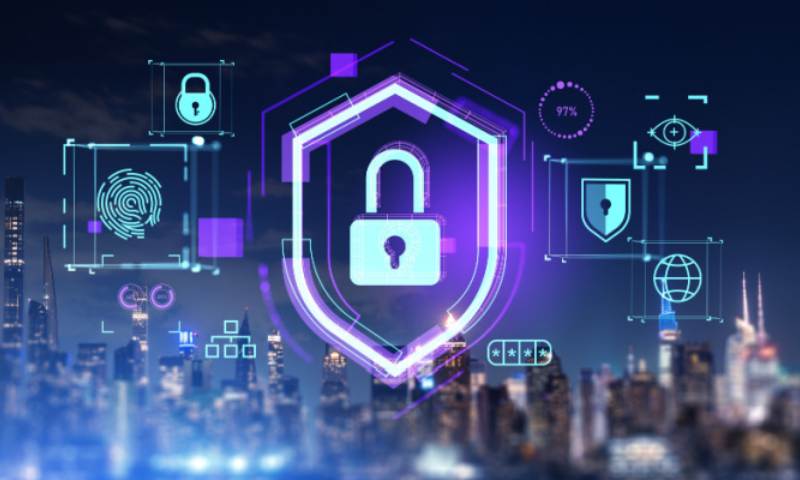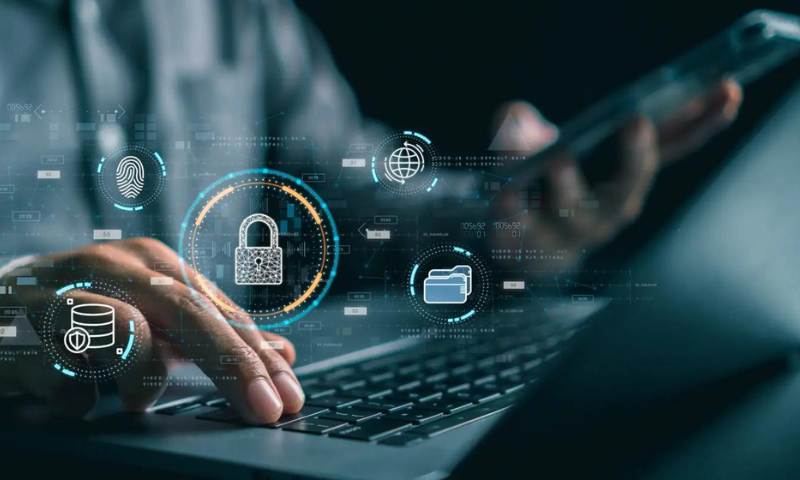Impact of Regulations: Elevating Security Standards or Stifling Innovation?
We’ve all seen how impact of regulations on security standards can shake things up. They can push companies to soar to new heights of safety or clip their wings, grounding bold ideas. Now, it’s time to dive into this world where rules meet tech. Some say rules are the game changers that keep our data safe. Others argue they’re chains that keep us from racing ahead. I’m here to untangle this knot. Let’s figure out where these regulations land us—on the launchpad of innovation or in the quicksand of stagnation?
Understanding the Balancing Act: Regulations vs. Innovation
The Role of GDPR in Shaping Security Practices
GDPR is about keeping people’s data safe. Businesses must protect this data or face big fines. It means new ways to handle private information. These changes can be tough, but they make sure personal details stay private. Companies must ask for permission to use someone’s data now. They also have to tell people if a hack happens. GDPR impacts security measures by making data rules strict.
Some think GDPR can slow down new ideas. They say creating new tech gets harder. Why? Because now there are more rules on how to handle data. And sometimes, it can be unclear what is okay and what’s not. But many believe GDPR helps more than it hurts. It makes people trust companies who keep their data safe. It shows that they care about privacy and security.
ISO 27001: A Catalyst for Standardizing Security Measures
ISO 27001 helps make security the same across different companies. It gives a clear list of security stuff every company should have. When a company gets ISO 27001, it’s like a badge that says, “We’re safe to do business with.” To follow ISO 27001, companies set up strong security that helps keep data safe from thieves and hackers.
It’s not just a one-person job. Everyone in the company has to help out. They all learn what to do to keep things secure. Some people worry that running after such standards stops new ideas. They say people are too busy ticking boxes for ISO 27001 to think of cool new tech. But, this standard can also spark innovation. It can push teams to think about new ways to solve security problems.
ISO 27001 adoption can help prevent a data breach. It makes companies think about risks and how to handle them ahead of time. With ISO 27001, even if the rules change, companies know the basics to keep data safe. That way, they can react quick to new risks that pop up. It makes firms worldwide speak the same security language. This helps when businesses from different places work together.
Overall, GDPR and ISO 27001 show how rules can lift security up. They can make it tough at times but also lead to better, safer ways to do things. It’s not just about blocking new ideas. It’s about keeping people and their data out of harm’s way. We need rules like these. They guide us to be smarter about how we use and protect data. And in the end, this can lead to more trust and even more chances to create new things, the safe way.
The Dual Impact of Compliance on the Healthcare and Financial Sectors
Adhering to HIPAA: Striking the Balance Between Privacy and Innovation
HIPAA sets the bar for keeping patient data safe. It’s tough but key. This law makes sure healthcare providers keep our personal health info safe. They must be careful not to let this info out without permission. So, clinics and hospitals work hard to meet HIPAA standards. They put strong security in place. All to protect our health records.
But there’s more to it. HIPAA doesn’t just set rules; it sparks change. How? Well, it leads to new ways to protect data. It pushes for tools that keep our info locked tight but still let doctors access it when needed. This balance is a challenge, but it pushes for progress in how we handle health info.
SOX and PCI DSS: Financial Regulations Driving Security Enhancements
Now, let’s talk money. SOX and PCI DSS are big deals in finance. SOX makes companies report their finance info right. Companies must show their numbers are true and fair. This stops tricks and keeps things honest.
PCI DSS is a bit different. It’s about keeping card data safe. Any business that takes card payments must follow PCI DSS. It has rules to protect card info, online and in stores. This is huge, as cards are how many of us pay for things.
Thanks to PCI DSS, paying with cards is safer. It’s tough on crime like fraud and hacking. That’s a win for everyone. By meeting PCI DSS, companies use top-notch security. This means better trust with customers, and that’s key for business.
Both HIPAA and PCI DSS show how rules can make things better. They bring in stronger security, which is good for everyone. Sure, it takes work and smart thinking. These rules, though, they lead to safer ways to handle sensitive info. They help keep our health and money info locked up tight. And that’s something we all need.
The Global Perspective: International Regulations and Their Localized Impact
Harmonizing EU Cyber Regulations with Global Security Standards
We see new laws about cyber safety all the time. The EU sets rules that change how we all think about cyber safety. They make us do better. We have to protect data more. They push us to follow global rules. These rules are big and affect many places, not just Europe. They make us use good practices like ISO 27001. This is all about keeping info safe in a smart way. We have to follow GDPR too. GDPR says how to handle personal data right.
Now, businesses work hard to meet these rules. They must keep data safe. They cannot let anyone steal it. Sometimes it costs a lot of money. They have to train their people. They have to get new tools. This can be tough. But doing this can stop bad things like data theft. It means everyone gets better at cyber safety.
Some may think such strict rules slow down new ideas. But let’s be real, safety matters a lot. When we keep data safe, people trust us. They like our services more. And that is good for business. So, EU laws push us to be our best. They help us set high standards all over the world.
Navigating the Complex Landscape of Data Protection Legislation
In today’s world, data is like gold. We must protect it. Every place has rules about this. In the US, HIPAA keeps health info safe. It says only certain people can see your health data. It must be locked up tight. This helps everyone feel safe about their health info.
We also have SOX rules. They make sure money info is right and safe. Banks and other money places use it. It keeps our money safe. We also have rules for energy and power companies. They protect the big systems that give us light and heat.
This can be tricky. Every place has its own rules. But we need to follow them all. We try to use the best practices. These are ways to make sure data stays safe. We use NIST and SOX to make these happen. We check all the time to make sure we’re doing it right. This is called an audit.
When we follow the rules, we know what risks we have. Then we can keep data safe. This brings a lot of value. It helps people trust us more. They know we take care of their info.
But what’s more interesting? These rules talk to each other. They often want the same thing. So when we meet one rule, we might be close to meeting others. This makes it easier to work across borders.
All this work makes sure we keep getting better at protecting data. This is what we call cybersecurity maturity. It helps us keep data safe today and in the future. We always look out for new risks and deal with them. That’s how we stay ahead in cyber safety.
No matter where we are, we need to handle data right. The rules are there to guide us. They make sure we do our job well. They help us protect everyone’s data. This is how we link local laws with big world standards. It’s a big job, but it keeps us all safe. And that’s the most important thing.
Forward-Looking: Anticipating Changes in Cybersecurity Compliance
The Evolving Role of Cybersecurity Audits in Organizational Accountability
Rules in cybersecurity change like the weather. It’s my job to keep up. A big part of this is watching over cybersecurity audits. They check if companies follow rules, much like a teacher checks homework. The audits matter more now because they tell us if a company is safe to trust with your data. If you’ve ever had to give your name or email to a website, you know your info is out there. Cybersecurity audits aim to make sure it stays locked up tight.
New laws make these audits bigger deals. For example, GDPR asks for strong security in handling personal data. Audits check this. If a company fails, it’s a big problem for them. GDPR impact on security measures is huge. It helps everyone know which companies keep their data safe. It’s like a badge of honor for a business.
And it’s not just for some businesses. All kinds must take care. For hospitals, HIPAA sets the rules. It looks at how they keep your health records safe. ISO 27001 is another big name. It’s a set of steps a company can take to guard data. Many are adopting it. It’s like a recipe for keeping secrets. NIST framework adoption is growing too. It’s a guide from America that helps build strong digital walls.
The job gets bigger each year. That’s where folks like me step in. We help companies stay ahead. We have to keep sharp. The laws change, and so must we. I often dive deep into new rules so we can get all ducks in a row.
Preparing for the Future: Emerging Regulations and IoT Security Challenges
Looking ahead, security gets even trickier with IoT, or ‘smart’ devices. Our fridges, cars, even lightbulbs can go online now. That’s cool but also a bit scary. Because each of those could let a hacker into your life. We can’t have that.
IoT device regulation impact is the next big talk. Governments are drafting rules to make sure these devices are safe. Like making them secure right out of the box. Cars are no joke. They’re smart now too. So, automotive cybersecurity regulation is on the rise. The energy sector’s in the same boat with its own rules.
For me, it’s about building a bridge between today and tomorrow. I have to think about what’s coming. I give advice on how to get ready for these changes. I watch the horizon for new security standards due to regulations. It feels a lot like being a coach. Being one step ahead is how we win.
Every time a rule changes, it’s a chance to make things safer. We can’t drop the ball. Whether it’s personal emails or how the lights turn on, it all needs protection. It keeps the future exciting but also safe. And that’s good for us all.
We’ve looked at how rules and fresh ideas both play a huge part in keeping our online world safe. From GDPR shaping how we protect personal data to ISO 27001 setting the bar for security, it’s clear that structure and creativity have to work together. In the health and money worlds, laws like HIPAA and SOX guide us on privacy while pushing for better safety.
Across the globe, matching EU cyber rules with other standards is tough but needed. And as the rulebook for data safety grows, we all have to stay sharp. Looking ahead, we must keep our eyes open as cybersecurity checks change and new tech like IoT comes with new risks.
For sure, staying on top of all this won’t be easy. But it’s our best bet for a safer future. It’s a bit like juggling – you have to keep all the balls in the air. So let’s keep learning and adapting, because that’s how we’ll win this game.
Q&A :
How do regulations influence the development of security standards?
Regulations serve as a backbone for establishing and evolving security standards, introducing a framework that organizations must adhere to as a minimum requirement. Compliance with such regulatory mandates often encourages businesses to adopt more stringent security protocols to protect sensitive data, ensure customer privacy, and maintain business integrity.
What role do government regulations play in cybersecurity?
Government regulations in cybersecurity are crucial for setting baseline requirements for data protection and information security. They aim to protect both individuals and national interests by mandating that organizations implement specific measures to mitigate cyber threats, ensure data integrity and availability, and respond effectively to breaches.
Can changes in regulations affect existing security protocols?
Yes, changes in regulations can significantly affect existing security protocols. When a regulation is updated, organizations may have to modify their internal policies, invest in new technology, or enhance their staff training to align with the latest requirements, all of which can result in more robust security practices.
How do international regulations impact security standards across borders?
International regulations impact security standards by promoting a consistent approach to data protection and cybersecurity across different nations. These regulations can lead to the development of standardized best practices and encourage international cooperation. However, organizations operating globally must navigate a complex landscape of varying regional laws.
Why are industry-specific regulations important for security standards?
Industry-specific regulations are essential for tailoring security standards to the distinct risks and requirements of different sectors. For example, the healthcare industry must comply with regulations like HIPAA to safeguard patient information, while financial institutions are bound by regulations like GDPR and GLBA, which address specific privacy and data security concerns within the financial context.


